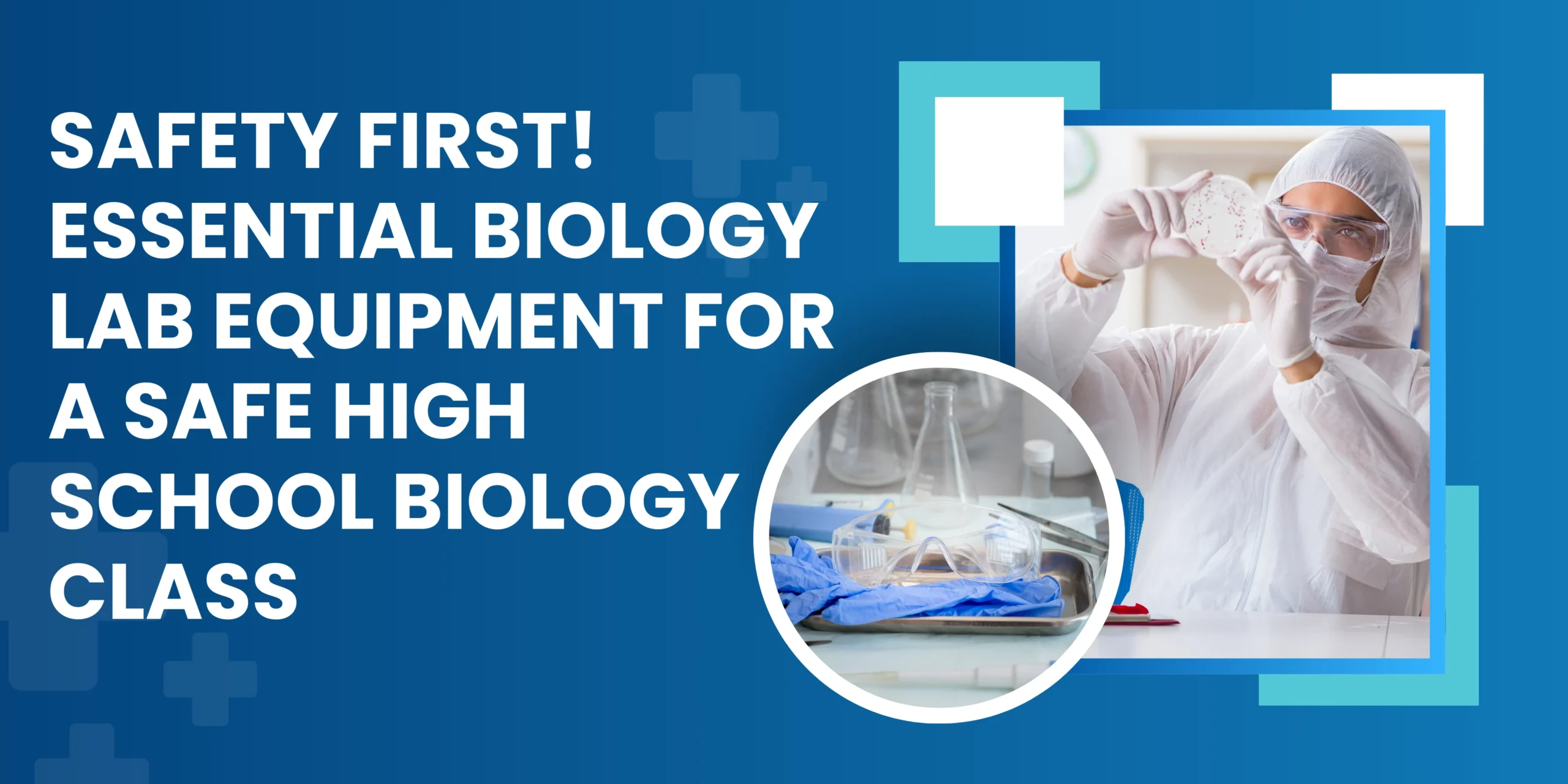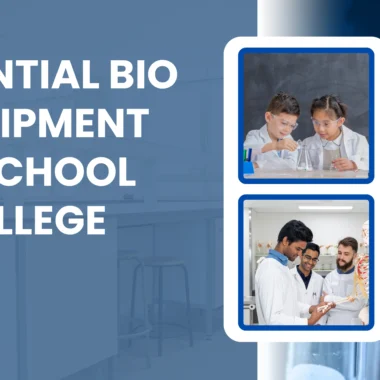Introduction
Let’s be real—biology labs can be as fun as they are dangerous. One minute you’re looking at cells under a microscope, and the next, someone’s knocked over a beaker full of acid. That’s why “safety first” isn’t just a slogan—it’s a must-follow rule. Having the right lab equipment isn’t just about getting accurate results. It’s about making sure every student walks out of that lab in one piece.
In this article, we’re diving into the must-have lab equipment that keeps high school biology labs safe and sound. Whether you’re a teacher, a student, or a school admin, you’ll walk away knowing exactly what you need to keep that lab running like a well-oiled (and totally safe) machine.
The Basics of Biology Lab Safety
Before we talk gear, let’s talk about why lab safety matters so much. High school students are naturally curious (and sometimes a little reckless), and a biology lab is full of tools and chemicals that can become dangerous in the wrong hands.
Why Safety Matters in Biology Labs
Lab safety is about more than just preventing burns or cuts. It’s about creating a space where students can learn and explore without fear. A well-equipped, safety-first lab fosters confidence, curiosity, and critical thinking.
Common Hazards Students Might Face
- Chemical spills
- Broken glassware
- Fire hazards
- Biohazards from dissection or bacterial cultures
- Sharp tools like scalpels and needles
Safety Goggles
You only get one pair of eyes—protect them! Goggles shield against chemical splashes, flying particles, and even UV light during certain experiments.
Lab Coats
Lab coats keep your clothes clean and act as a barrier against spills.
Gloves (Nitrile, Latex, etc.)
Gloves are your go-to when handling chemicals, biological materials, or glassware. Nitrile gloves are a great latex-free option for those with allergies.
Lab Safety Essentials
Some gear is specifically designed to save lives or minimize harm when accidents do happen. These should always be nearby and ready to use.
First Aid Kit
Fully stocked with band-aids, burn cream, antiseptics, and more. It should be visible, labeled, and regularly checked.
Fire Extinguisher and Fire Blanket
Fire in the lab? A fire extinguisher is your first defense, while a fire blanket is perfect for smothering flames on clothing.
Equipment for Safe Handling of Chemicals
Dealing with chemicals requires extra caution. Here’s the gear that helps manage and minimize chemical risks.
Proper Storage Cabinets
Acids, bases, and flammable liquids should never be stored just anywhere. Chemical cabinets are built to contain and isolate risky substances.
Chemical Spill Kit
From absorbent pads to neutralizing agents, this kit helps clean up spills safely and quickly without endangering anyone.
General Lab Equipment That Promotes Safety
Even your day-to-day tools need to be safe and student-friendly.
Microscopes and Slides
Microscopes should be sturdy and stable. Slides should be handled carefully and stored in cases to prevent chips and cuts.
Test Tubes, Beakers, and Flasks
Choose heat-resistant, borosilicate glassware to prevent shattering. Store them in racks to keep them from rolling off counters.
Dissection Tools
Scalpels, scissors, and pins must be sharp, clean, and stored securely. Blunt or dirty tools are accidents waiting to happen.
Classroom Setup for Maximum Safety
Even with all the best equipment, a poorly designed lab layout can create hazards.
Organized Workstations
Clutter equals chaos. Clear, separate workstations help prevent cross-contamination and collisions.
Clearly Marked Exits and Safety Signs
In case of an emergency, you don’t want students scrambling. Bright, clear signage can make all the difference.
Accessible Safety Instructions and SOPs
Post safety protocols and SOPs (Standard Operating Procedures) where students can see them. Better yet, go over them at the start of every major lab.
Teaching Students About Lab Safety
Safe labs start with well-informed students. Education is just as important as the equipment itself.
Safety Contracts
Have students (and parents) sign a safety contract to ensure they understand the rules and consequences.
Pre-lab Safety Instructions
A 5-minute safety rundown before every lab keeps the essentials fresh in students’ minds.
Safety Quizzes and Demos
Make safety interactive! Quizzes, role-play, and demos help make the rules stick.
Maintenance and Regular Checks
Equipment isn’t “set it and forget it.” Regular checks are non-negotiable.
Equipment Inspection
Microscopes, hoods, fire extinguishers—inspect them monthly and log the results.
Restocking Safety Supplies
First aid kits, gloves, disinfectants—never let these run dry. Assign a student or lab tech to check them weekly.
Reporting and Replacing Damaged Items
Teach students to report broken items immediately. Replace or repair them before anyone gets hurt.
Conclusion
Safety in a high school biology lab is all about preparation, awareness, and the right equipment. It’s not just about avoiding accidents—it’s about building a culture of responsibility and curiosity. With the proper gear, clear rules, and regular checks, your classroom becomes a safe space for scientific discovery.
FAQs
1. What is the most important piece of lab safety equipment?
While everything is crucial, safety goggles are a must. Eyes are extremely vulnerable and need constant protection.
2. How often should lab equipment be inspected?
Ideally, basic equipment should be checked weekly and safety-specific tools should be inspected monthly.
3. Are gloves always necessary in biology labs?
Not always, but they’re highly recommended when handling chemicals, biological materials, or glassware.
4. What should be done in case of a chemical spill?
Evacuate the area, notify the instructor, and use a chemical spill kit. Never try to clean up hazardous materials with paper towels.
5. Can students use real scalpels during dissections?
Yes, with supervision and safety training. Teachers should ensure students know how to handle and dispose of blades properly.
You may also like: Chemicals, Plasticware, Glassware, Slides, Instruments, Consumables, Equipment, Model, Charts





